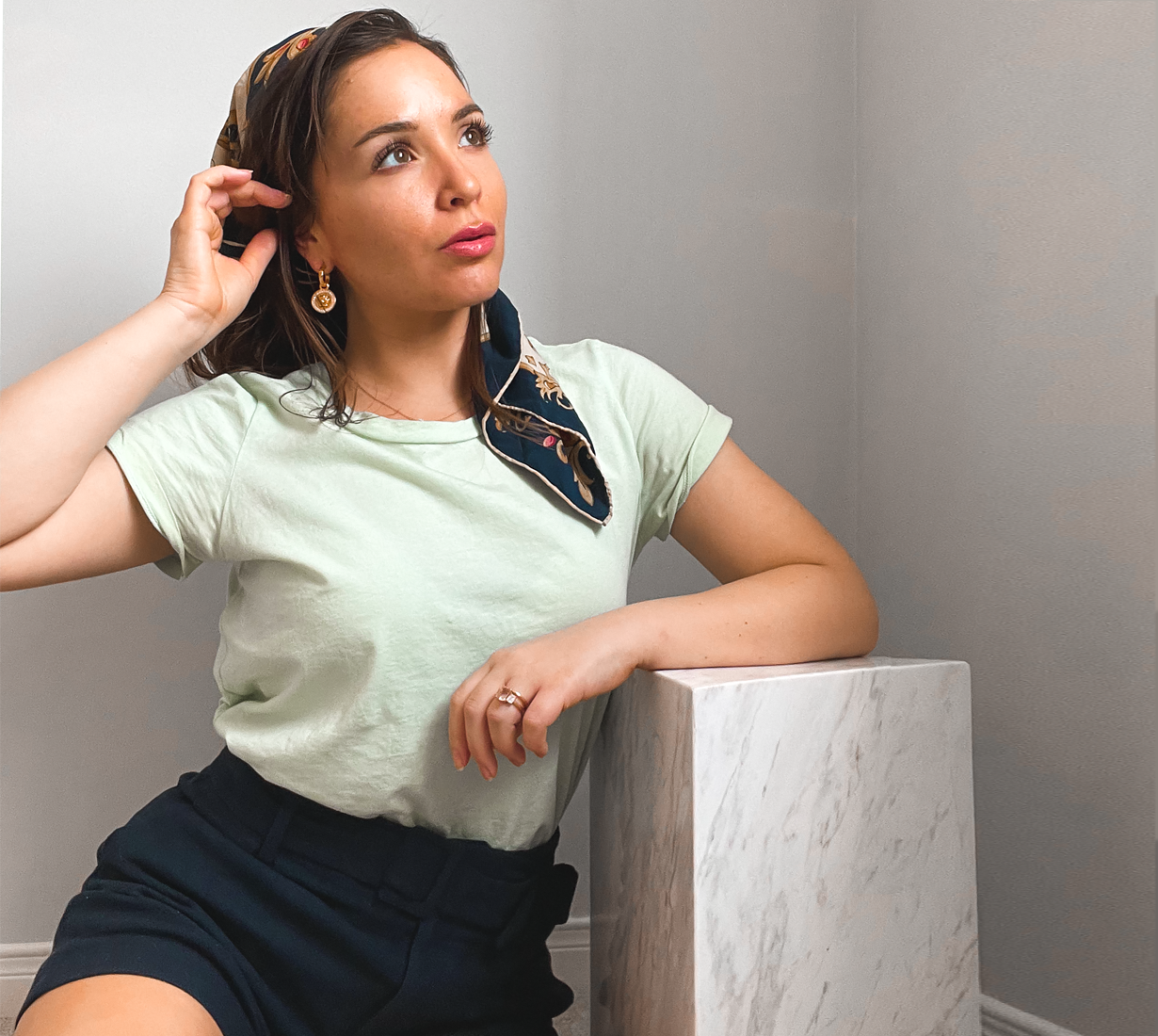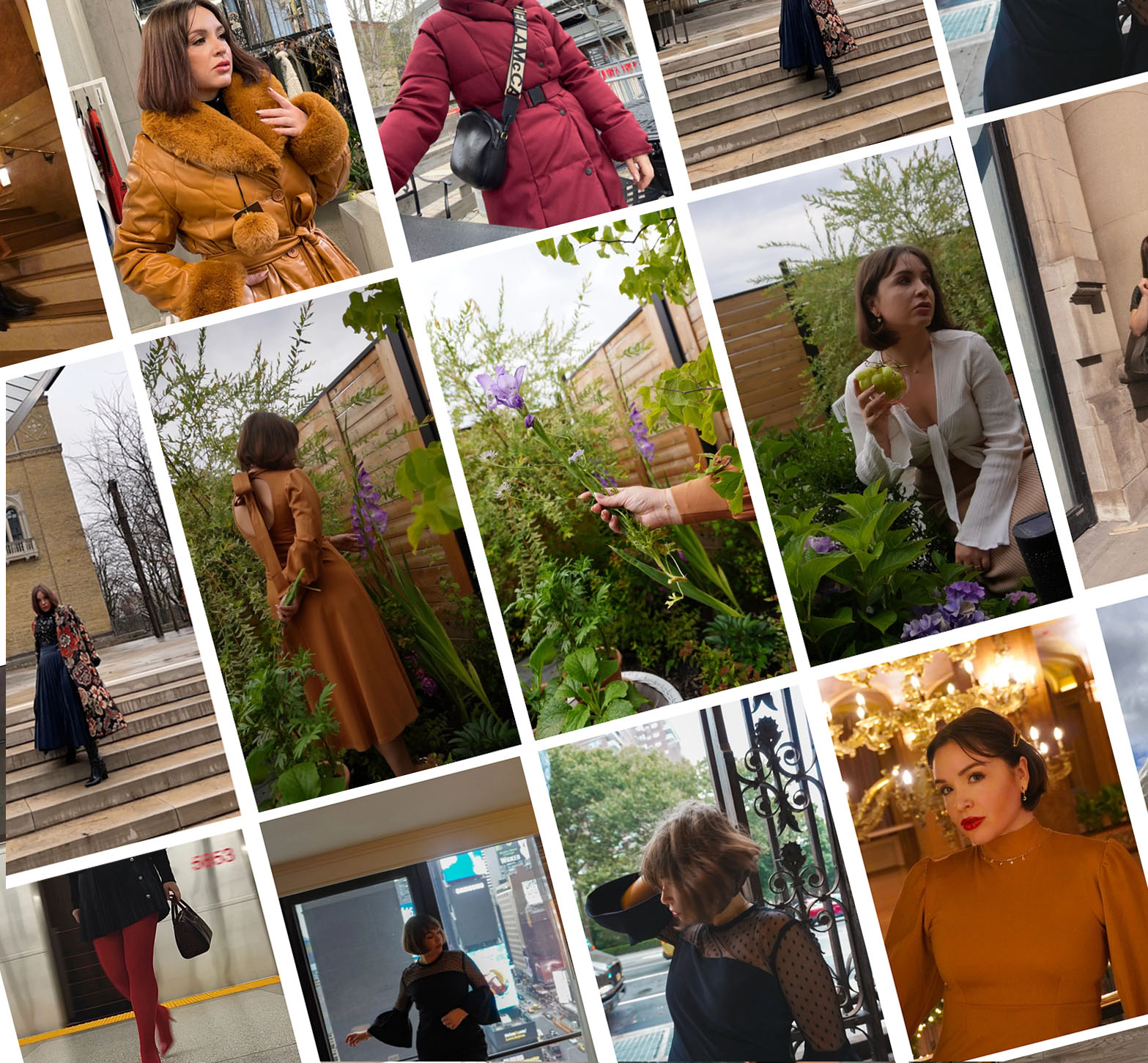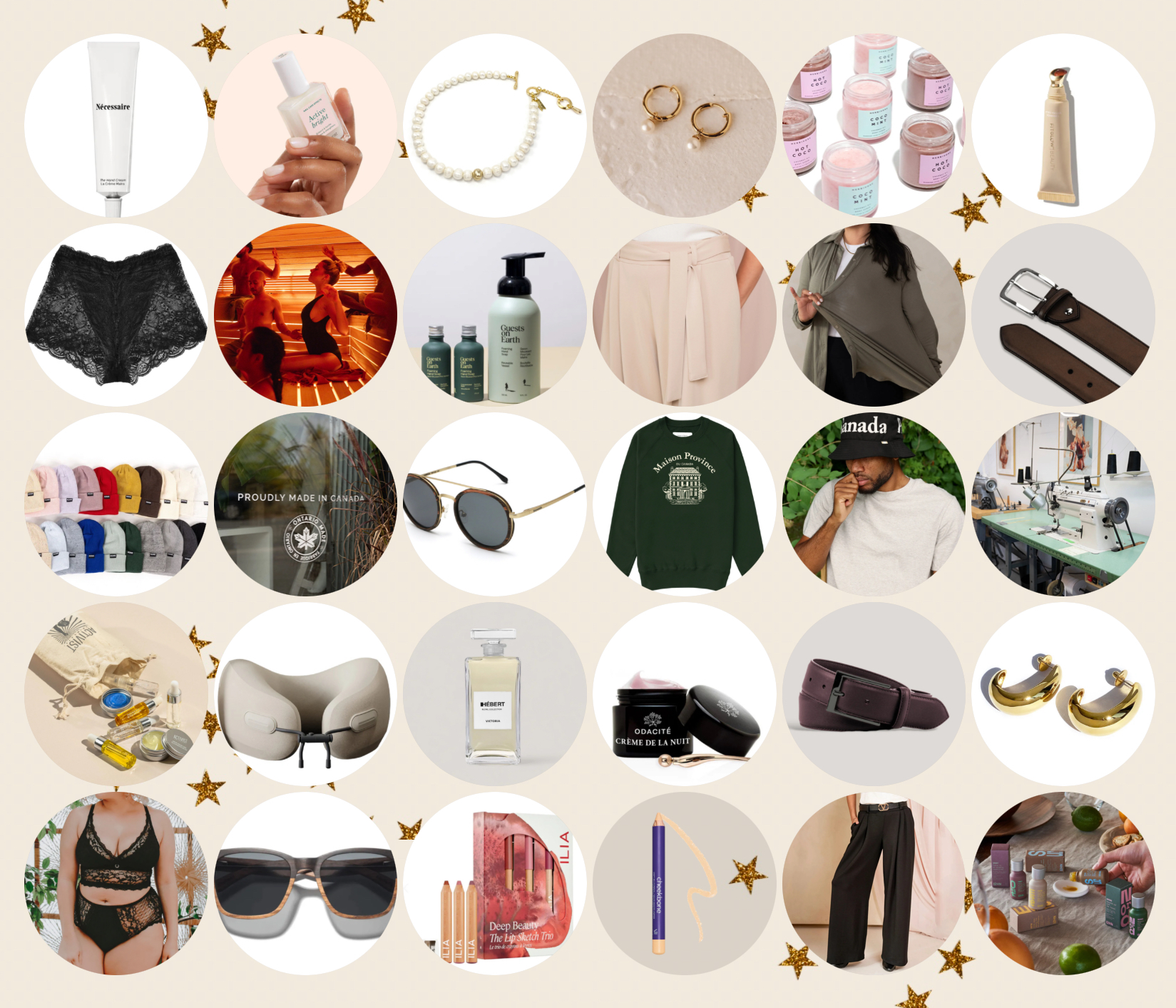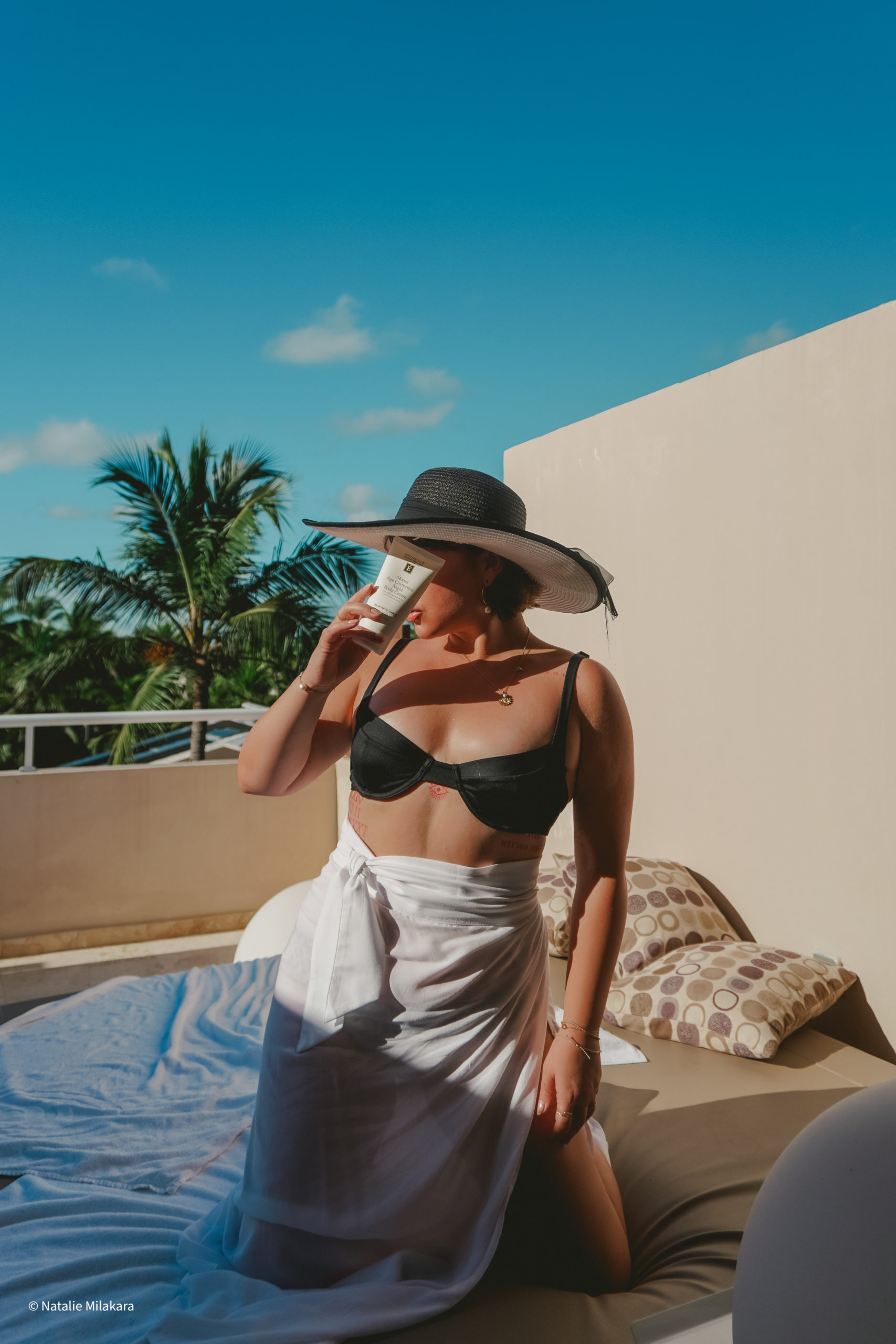Here are the 3 Factors to Consider When Planning a Capsule Wardrobe:
There are two main factors that are critical to building a long-lasting capsule wardrobe: garment color and proportions in relation to your body. I think we can all agree that some colors are more flattering on us than others. And if you’re unfamiliar with the Kibbe body ID system, I’ll introduce you to that. It’s wayyy better than the standard pear, apple, triangle, and hourglass body shapes you already know. Trust me. It’s a complete game-changer!
But there is a third factor of building capsule wardrobes that often goes unnoticed by people who write on the topic of capsule wardrobes. And that is your unique style essence. The first two factors enhance your physical appearance while the third factor communicates your personality. If capsule wardrobe guides have annoyed you in the past because they restrict you to only “plain” things, then the concept of style essence will resonate with you!
1. Color Palette: Determine What Colors Flatter Your Face & Overall Appearance
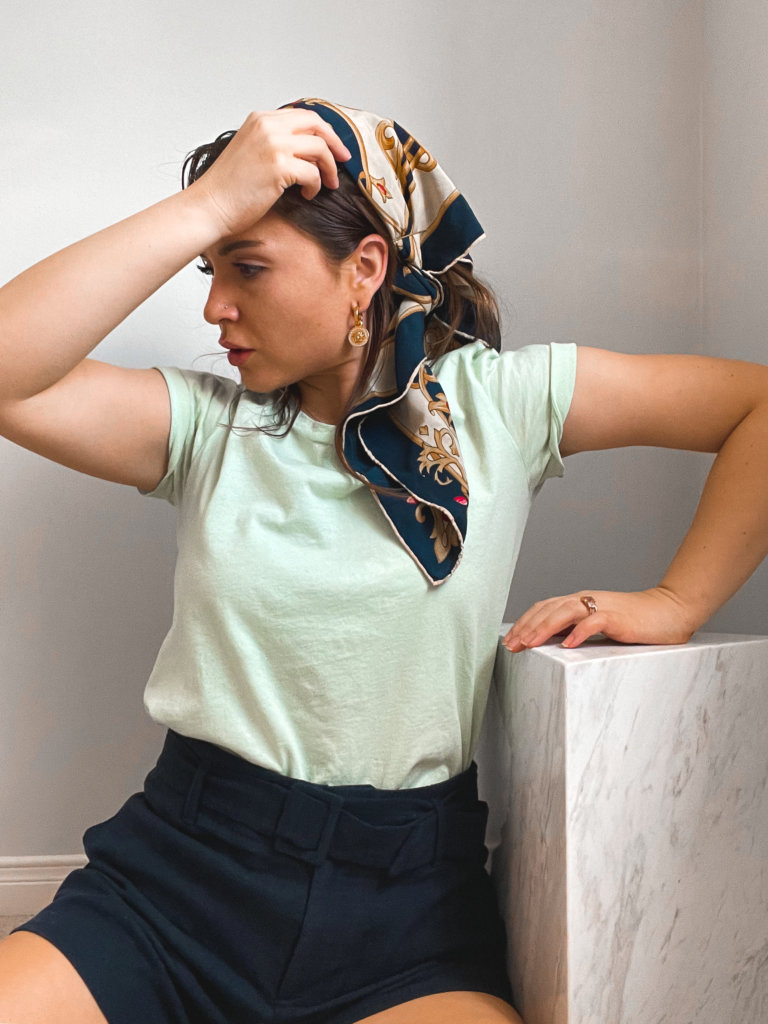
If you’re looking to flatter your complexion, I highly advise you to take the Concept Wardrobe’s color analysis quiz. I’m a Dark Autumn, which means slightly saturated, neutral-warm colors suit my skin best. And because of the high-contrast of my facial features, incorporating elements of color contrast (dark against light) can enhance my overall presentation.
Here’s my personal catch: I am a die-hard neutrals addict. My fear of saturated colors runs deep. The farthest I’ve ever strayed into color in my wardrobe is pastels and, occasionally, true red.
However, this season, I challenged myself to purchase a few pieces outside my comfort zone. And I was pleasantly surprised! My skin instantly looked more tan and my outfits brought attention to my face, not away from it. Am I ready to take the plunge and wear head-to-toe emerald? Not yet… But having a few pieces to mix in with my mainly neutral wardrobe adds something that I was missing for years. This season, I’ve chosen deep, warm wine as the “scary” colour to incorporate into my spring wardrobe.
Style Tip: Color-shy like me? Try mixing an accent color with one of your go-to neutral outfits. Notice in the cover photo for this article that I’ve mixed navy (a neutral) with a pale pastel accent t-shirt. I find this is an easy way to incorporate color for those of us who are shy about it.
Alternatively: Do you find yourself gravitating to colors outside your “recommended” color palette? I do! I love pastels in spring. And yet they’re not necessarily the “most” flattering on me. Follow the same tip above! (Navy is a deep, Autumn-appropriate color in addition to being a neutral.) Add colors you love as accents and let the rest of your outfit anchor the accent color.
2. Kibbe Body ID Type: Understand Your Body’s Structural Lines and Defining Proportions
The next thing to consider is your body type within the Kibbe ID spectrum. I’m a slight-hourglass with an “evenly blended” appearance. (Huh? I’ll explain!) The Kibbe Body ID spectrum follows a gradual progression from very angular appearances to very rounded appearances. My silhouette is not very sharp, but it’s not super round either. If you follow the Kibbe body model, I’m a Soft Classic (or perhaps a Theatrical Romantic.) This means that my face and body is predominantly “yin” (Translation: softness/fullness) with a blended balance of “yang” (Translation: angularity/sinewy.) Knowing my body’s lines and proportions allows me to echo the same qualities in my clothing choices. This is the formula for creating outfits that enhance and flatter you specifically!
Don’t know your Kibbe Body Type yet? I highly recommend that you start with The Concept Wardrobe’s overview. And then take the Kibbe Body Test–be sure to be kind to yourself while answering! The questions aren’t about whether you are fit or not, they are based on your underlying bone structure, location of fleshy deposits (not the same as fat deposits), feature proportions (ie: head size; shoulder, hip, and waist widths; hands and feet size; limb length, and perceived vertical height) and shaping (ie: sloped or straight shoulders, full or thin lips, eye shape and spacing, arm and thigh fullness, sharp/squared or soft/rounded shoulders, and tendencies to gain weight in the bust, arms, thighs, face or stomach.)
I’ve always known that long, boxy shapes look dreadful on me. And now I know why! Of course, on a long, lean body, like a Dramatic or Flamboyant Natural, they can look incredible. Other things I avoid as a petite hourglass (or Soft Classic/Theatrical Romantic): low-waist anything*, tops that extend past the hip*, long boxy blazers, and high-contrasting shoes. (Hint: these items will make your legs look shorter. At 5′ 2.5″, that’s not what I want.)

*Style Tip: I have a long torso and somewhat shorter legs. If you have a short torso with longer proportioned legs, highrise pants and skirts may be overkill on your silhouette. In fact, you may find them uncomfortable or unflattering! A medium-rise, or lower, could be your sweet spot. It’s important to find what works best on your body instead of following an exact formula.
When you get your outfit formula right, and your clothing choices echo your body’s natural features, then clothing will appear like a natural extension of your body; as opposed to clashing against it.
– Natalie Milakara
Why Knowing Your Kibbe Body Type Makes a Huge Difference
As a child growing up when ultra-low-rise was a thing, I struggled with why I looked unbalanced and pudgy–even though I was relatively fit. It wasn’t until years later that I realized it has nothing to do with my body and everything to do with what I was putting on it! Looking back, I now see that those low-rise jeans were visually cutting me in half, making my legs look disproportionality short. Not to mention all the visually distracting distressing that was done to them. But they looked good on Paris Hilton, right? That’s because Paris is most likely a Dramatic or Flamboyant Natural! Her shoulders are very wide, her hips are narrow, and her body leans heavily towards angularity.
I had the same confusion around boyfriend blazers in my mid-twenties. I was frustrated why they didn’t look fresh, natural, and cool on me like they did on other women! Instead, I looked frumpy and lost. But here’s the thing about boxy, oversized blazers: they are comprised of large, long, angular shapes. And my body is balanced, slightly petite, and curvy. A better blazer option for me would be made of a soft, supple fabric with tailoring around the waist and a cropped length. See the difference? Knowing what works best on my body saves me the grief of investing in the wrong silhouettes.
Celebrity Examples of Kibbe Body Types
The vast majority of top-fashion models are the Dramatic or Natural body type. Dramatic (Karli Kloss, Bella Hadid) and Soft Dramatic (Alessandra Ambrosio, Tyra Banks, Gigi Hadid) seem to be particularly ‘in vouge’ these days. And in the 90s, fashion favored Flamboyant Naturals (Linda Evangelista, Cindy Crawford, Claudia Schiffer, Stephanie Seymour). The 90’s models had powerful shoulders, but all of these body types are tall, statuesque, and elongated. On the flip side, Romantics (Sophia Lauren, Beyonce, Kim Kardashian, Marilyn Monroe) and Gamines (Audrey Hepburn, Kelly Osborne, Zoey Deschanel, Mary-Kate and Ashley Olsen) appear vertically quite short. Classics (Lupita Nyong, Grace Kelly, Maryl Streep, Veronica Lake) are balanced, right in the middle of the spectrum.
Style Tip: Each body-type category has different garment cuts and silhouettes that flatter them. Even fabric and symmetry matter! Knowing that high-fashion companies design with Dramatic and Natural body types in mind is particularly helpful if you’re the type who looks to that sort of material for inspiration.
Instead, look to style icons who share similar body lines, proportions, and levels of curves. Garments that echo the same lines and proportions will look like a natural extension of the body. Versus garments that clash with your lines and proportions will look noticeably awkward. A Dramatic wearing a Gamine-style outfit will make the woman look like she’s dressing too young. And a Gamine will look like a girl playing dress-up in clothes better suited to a Dramatic.
In fact, knowing what doesn’t suit you can point you in the right direction too!
Struggling to nail down your Kibbe ID?
Listen, everyone struggles with their Kibbe ID at first! But it makes all the difference when you’re planning for a capsule wardrobe. Make sure you take a photo of yourself from chest level for your Kibbe assessment. All modern smartphone cameras have a timer feature. Just prop your phone up around chest-level, set the timer, and step back. Your full body should be in the photo. Don’t begin your Kibbe test or assessment trying to prove you are one ID or another. Be honest (and kind) with yourself. If you’re really struggling, ask someone for unbias feedback. For example: “Would you say my head’s size seem large, small, or just right for my body?” or “I’m trying to determine if my shoulders are broad compared to my hips. Which one seems the wider? Or are they about the same?” Keep in mind that the end goal is finding garments and outfits that suit you best! Each body type has corresponding ways of dressing that make them look effortless and natural. Whereas the wrong garments can look unflattering and disharmonious.
Many people seem to like this introduction video by Aly Art and her follow-up video explaining how to do the Kibbe body assessment. Also, I want to share this graphic from Glowsly that really helped me:

Seeing all the body types lined up with the subtle visual differences in one view made things a lot clearer to me. Use the graphic above to narrow down 2 – 3 Kibbe body IDs. (Note that the illustration doesn’t cover all body factors, it focuses on just a few of them: shoulder width, shoulder cap shape, bust fullness, level of natural waist emphasis, hip width, and limb length. Other factors to consider which aren’t depicted in the above graphic can be found below.)
How to Assess Your Body Measurements, Lines, and Proportions
So what factors do determine your Kibbe body type ID? Well, quite a few! I’ll use my own photo here to show you what I was looking for when assessing myself:
- Head size compared to other body proportions (the larger your head, the shorter you are perceived to be.)
- Length of arms
- Length of legs
- Size of feet and hands
- Width of Shoulders
- Shape and level of neck-to-shoulder decline (AKA: shoulder slope)
- Shape of shoulder caps
- Ribcage Width
- Bust Fullness
- Level of natural waist emphasis
- Hip width
- Hip fullness
- Fleshiness of upper arms and legs* (please see note below.)
- Perceived vertical line (perceived height–this is not actual height measurement. See the first bullet point.)

Based on what I can see in my photo, I was able to narrow down my Kibbe body type to Soft Classic, Soft Gamine, or Theatrical Romantic. Knowing roughly what “family” of IDs you most likely fall into is enough to get you started with a capsule wardrobe! Read suggested wardrobe guides for your Kibbe body type(s), there’s dozens online. Once I had fully digested those three body types, I was able to rule two of them out. Gamines tend to have delicate bone structures and a naturally lower body fat percentage. Also, others were able to give me a reality check that my head isn’t as big as I thought it was. Reading the wardrobe suggestions for Gamines also helped rule out this Body ID category. Much like Gamines, Romantics have a short perceived vertical line due to their larger proportioned heads. I also lacked the super nipped-in waist and full bust that give Romantics their signature silhouette. Romantics can pull off draped, sumptuous fabrics and ornate details in a way that I know I never could. I actually get the most compliments when I wear pretty plain, well tailored clothes. Coupled with my balanced proportions, soft hourglass shape, small but wide hands and feet, plus many other signature traits of a Classic, I finally found a home in the Soft Classic Kibbe Body ID Category.
* A Note on Arm and Leg Fleshiness:
If you struggle to lose fat from the upper arms and legs but have no problem burning it off your torso, then most likely you have naturally fleshy upper arms and legs. If the opposite is true, you may be a Natural or a Gamine.
KIBBE BODY ID TIP: Once you have a full-body photo of yourself taken from chest level, try outlining your silhouette. Simplifying your shape down to an outline can be very helpful to objectively answer some of the body-shape-related questions. Pay particular attention to how much your natural waist dips in and the silhouette of your shoulder caps. A cinched waist, even when overweight, coupled with rounded shoulder caps points to the “soft” categories of Body IDs. Whereas sharp, toned-looking shoulder caps (without working out) point to the “angular” Body IDs.
3. Style Essence: Learn How to Channel and Project Your Personality









Lastly, try to nail down your style essence. Ultra-feminine, layered, and soft? Bohemian, vintage, and grounded? Casual, rebellious, and sporty? Minimalist, tailored, and classic? Your style essence can be a mix! I gravitate heavily towards Classic garment styles with minimal detailing. Though I occasionally play with other style essences too: specifically Ingenue and Gamine. Both are compacted silhouettes, making them ideal for us ladies 5’4″ and under.
If you’re struggling to define your own style essence, The Concept Wardrobe has a great overview.
Once you land on your primary style essence, consider again your Kibbe Body ID. Your garments should echo, mimic and accentuate what you have naturally. If I’m a Soft Classic with an even, harmonious blend of Yin-Yang, with some added femininity, then the outfits that flatter me best will mimic that.
In general, I look for classic pieces that emphasize feminity (ie: my waist and curves) while still having a little mix of sharp structure (usually at the shoulders or waist.) Boxy silhouettes and firm fabrics appear too severe on Classics. But on the flip side, too many ruffles and drapes appear distracting.
Want to see what I’ve been wearing lately as a Soft Classic? Follow me on Instagram or check back at The Purist Life to see how I’ve adapted my style.
While the majority of my capsule wardrobe consists of ‘Classic’ pieces, I like to throw in the occasional ultra-feme or slightly aggressive item too. I enjoy the contrast that they bring, and I like having some edge and youthfulness to my appearance. (You may prefer to project a different vibe!)
And just to tie a nice bow on this whole thing… remember at the beginning of the article we found that I was a high-contrast color type (Dark Autumn)? Perhaps that is the subconscious reason that I’ve always preferred my outfits to encapsulate elements of contrast. But because my body ID is Classic, this means the contrast needs to be minimal, such as in accessories, so that it doesn’t distract from the over-all harmonious vibe 🙂
STYLE TIP: If you are also a Soft Classic, then you may love my “Kibbe Soft Classic Outfit Inspiration” board ! For more outfit inspiration pins like this, be sure to follow me on Instagram and follow me on Pinterest.
Putting It All Togther
Okay, so you know your color palette, Kibe Body ID Type, and have narrowed down your style essence… now what? First, I would recommend you write it all down. Because believe it or not, you will want to be referencing this data all the time while you’re building a capsule wardrobe. And the next time you go shopping? Yeah, you’re gonna want to pop open that note.
Before you buy anything, check it against:
- Your complimentary color palette
- Your Kibbe Body ID’s balance between Yin (angularity) and Yang (softness)
- Your primary style essence
Holistically, your capsule wardrobe should consist of mainly neutral foundational pieces with supporting accent pieces. Foundation pieces are critical to getting your overall look right. So it’s worth it to spend time trying different cuts, brands, color variations (ie: ivory vs. true white; charcoal vs true black; muted blue vs bright baby blue vs saturated sapphire blue), and fabrics (thick denim vs medium-weight cotton; linen vs silky viscose).
1. Basic foundational pieces
If you’re starting from scratch, or you’d like to re-evaluate your current wardrobe, then I’d suggest starting with the basic, foundational pieces. This will differ from person to person, and depend on the climate you live in plus your lifestyle.
Basic Foundational Pieces Could Include:
- t-shirts or tank tops in neutral colors – Choose YOUR neutrals and t-shirt cuts that mimic your Yin/Yang mix.
- a blouse in a neutral color – Choose YOUR neutrals and t-shirt cuts that mimic your Yin/Yang mix. Any details or ornamentation should channel your style essence.
- dark or light denim jeans, or trousers – Choose the appropriate rise for your torso. If you have a compact/small body type, go for cropped styles that show your ankles. Choose ornamentation/details based on your Style Essence.
- basic skirts in neutral colors – Again, choose YOUR neutrals and the appropriate rise for your torso. Unless it’s floor-length, skirt length should mimic your vertical line. Compact/small bodies should be wary of midi-length skirts unless there is a slit. Choose ornamentation/details based on your Style Essence.
- a light or dark neutral dress – Ditto the above advice. Dresses can be tricky, so hold off on this if you don’t feel you’ve mastered your mix of yin/yang.
- sweaters in neutral colors – The style should complement your overall mix of Yin/Yang. Any ornamentation of details should be inspired by your style essence. If you have a long vertical line, draped sweaters can work wonderfully. Those who are compact or curvy may find cropped cuts or fitted sweaters flatter their bodies best.
- a classic trenchcoat – Even if you don’t gravitate towards traditional styles, there’s a trenchcoat out there for you. Go for a light or dark neutral. Choose ornamentation/details based on your Style Essence.
- flats or pumps in neutral colors – These should complement your overall mix of Yin/Yang and the color should flatter your complexion. If you are petite, consider purchasing your footwear to match either your skin tone, if you plan to wear them bare-legged, or your trouser/stocking color. This will always create the illusion of longer legs.
- boots in neutral colors – Tap into your style essence to find the right type of boot. I find that boots do break the rule of proportions. So you may be surprised what style of boot works best on you!
- a neutral color handbag – The general “rule” for bags is that details should project your style essence… but I personally feel that handbags, totes, and backpacks are where you can really play with whatever style appeals to you. This next tip is more applicable to Petites: Choose the size of your handbag based on your body’s scale. If you are small, don’t carry around a monster-sized bag, unless you want to project a super-young vibe. (I made this mistake in University when oversized bags were “in.” And I can honestly say that I looked like an out-of-place pre-teen hauling that thing around.)
- leggings or tights – For those who wear leggings or tights frequently, ensure you have these in YOUR neutral colors, not just pure black. (Unless pure black is a flattering neutral for you.)
2. Supporting Accent Pieces
You will either gleefully jump into accent pieces or turn your nose up at them. And I think a lot of that can be predicted by the style essence you gravitate towards. (I see you Classics over there, not wanting to dip even a toe into magenta or chartreuse.)
Supporting accent pieces can be as wild or as subdued as you would like. Be they should follow the same rules: your colors, your Kibbe, and your essence.
Supporting Accent Pieces Could Include:
- a patterned or solid accent color top
- a textured or patterned sweater
- an accent color handbag
- an accent color jacket or coat
- patterned tights
- accent color shoes
3. Accessories
Ah, my favourite category! Accessories should absolutely channel your style essence. Have fun with them. Use 2 – 5 accessories to change the vibe of an outfit. If you are a minimalist, choose 1 larger accent or several dainty pieces.
- necklaces and earrings
- bracelets, rings, and watches
- silk or woven scarves
- sunglasses or eyewear
- belts
- pins and patches
- hats, headbands, and hair clips
- bold lipstick, eyeshadow, or nail polish
- gloves
- socks or tights
So we’ve reached the end of my first published guide on dressing for your body. I hope you’ve found it helpful. What other topics should I write about next?
